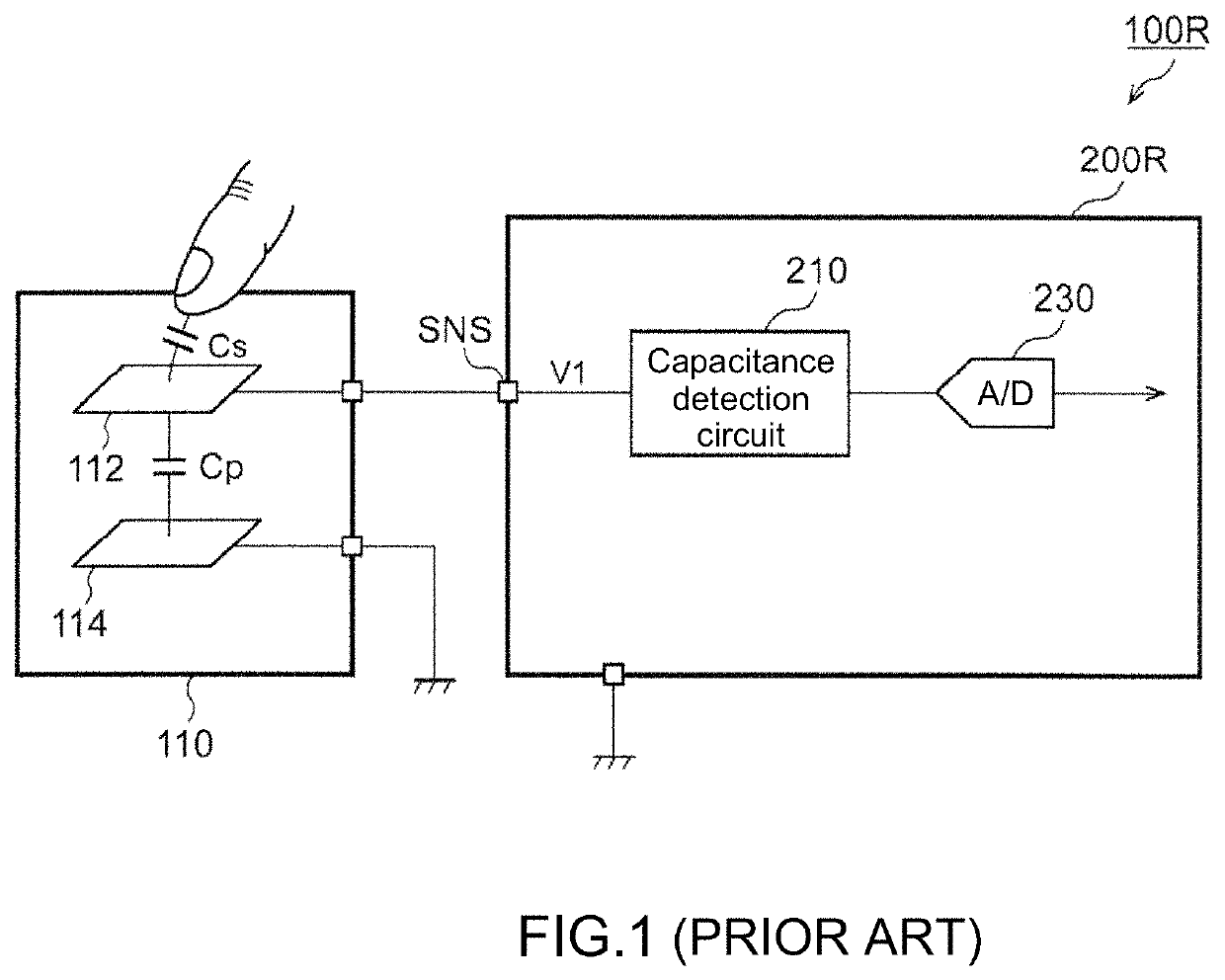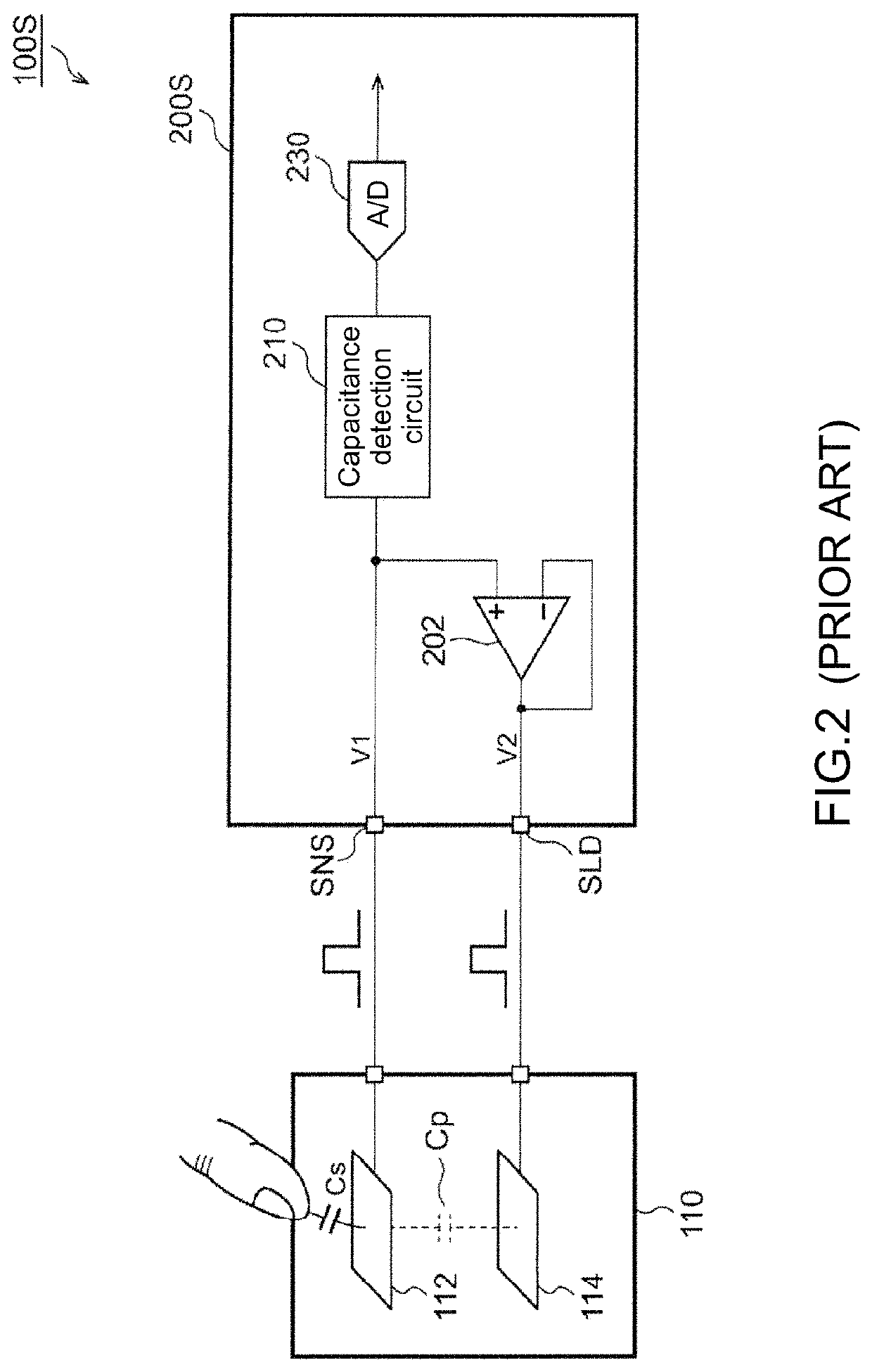Touch detection circuit, input device and electronic apparatus
a detection circuit and input device technology, applied in the direction of resistance/reactance/impedence, instruments, pulse techniques, etc., can solve the problems of not only inability to detect water drops attached to touch-style input devices, but also inability to detect two-point touch
- Summary
- Abstract
- Description
- Claims
- Application Information
AI Technical Summary
Benefits of technology
Problems solved by technology
Method used
Image
Examples
embodiment 1
Variant Embodiment 1
[0099]FIG. 9 is an action waveform diagram of the touch detection circuit 200 in variant embodiment 1. In the variant embodiment, the simultaneously-on time period of the first switch SW11 and the second switch SW12 starts immediately after the transition from the driving time period T1 to the transmission time period T2. When the first switch SW11 and the second switch SW12 are equal in on-resistance, the driving auxiliary circuit 244 enables the voltage Vy of the second terminal Pc to instantaneously decrease to midpoint voltage (i.e., standard voltage Vref) of Vdd and 0 V. When both the first switch SW11 and the second switch SW12 are turned off, the buffer 242 enables the voltage Vy of the second terminal Pc to equal the voltage Vx of the first terminals Ps.
[0100]Likewise, the simultaneously-on time period of the first switch SW11 and the second switch SW12 starts immediately after the transition from the driving time period T4 to the transmission time period...
embodiment 3
Variant Embodiment 3
[0106]FIG. 12 is a circuit diagram of the touch detection circuit 200C in variant embodiment 3. The voltage bias circuit 246C of the cancelling circuit 240C comprises a sample maintaining circuit 247. The sample maintaining circuit 247 performs sampling on the voltage Vx of the first terminals Ps during the transmission time period T2 (T5) and the amplification time period T3 (T6) and maintains the samples. During the driving time periods T1, T4, the voltage bias circuit 246C outputs the maintained voltage as the bias voltage (voltage Vbias). During the transmission time period T2 (T5) and the amplification time period T3 (T6), the voltage Vx of the first terminals Ps is outputted.
embodiment 2
[0107]FIG. 13 is a circuit diagram of the touch detection circuit 200E in embodiment 2. The first capacitance detection circuit 210E differs from the first capacitance detection circuit 210A of FIG. 6. The first capacitance detection circuit 210E comprises a reset switch SW41, a current mirroring circuit 274, and an integrator 276.
[0108]The reset switch SW41 is disposed between the first terminals Ps and the ground line. The transistor M41 on the input side of the current mirroring circuit 274 is connected to the first terminals Ps. The current mirroring circuit 274 comprises a sensing switch SW42. The integrator 276 outputs detection voltage Vs generated as a result of integration of the current Is flowing in the transistor M42 on the output side of the current mirroring circuit 274.
[0109]FIG. 14 is an action waveform diagram of a first capacitance detection circuit 210E of FIG. 13. In a reset time interval T11, the reset switch SW41 is turned on such that 0 V is applied to the fir...
PUM
| Property | Measurement | Unit |
|---|---|---|
| ground voltage | aaaaa | aaaaa |
| voltage | aaaaa | aaaaa |
| voltage Vy | aaaaa | aaaaa |
Abstract
Description
Claims
Application Information
 Login to View More
Login to View More - R&D
- Intellectual Property
- Life Sciences
- Materials
- Tech Scout
- Unparalleled Data Quality
- Higher Quality Content
- 60% Fewer Hallucinations
Browse by: Latest US Patents, China's latest patents, Technical Efficacy Thesaurus, Application Domain, Technology Topic, Popular Technical Reports.
© 2025 PatSnap. All rights reserved.Legal|Privacy policy|Modern Slavery Act Transparency Statement|Sitemap|About US| Contact US: help@patsnap.com



